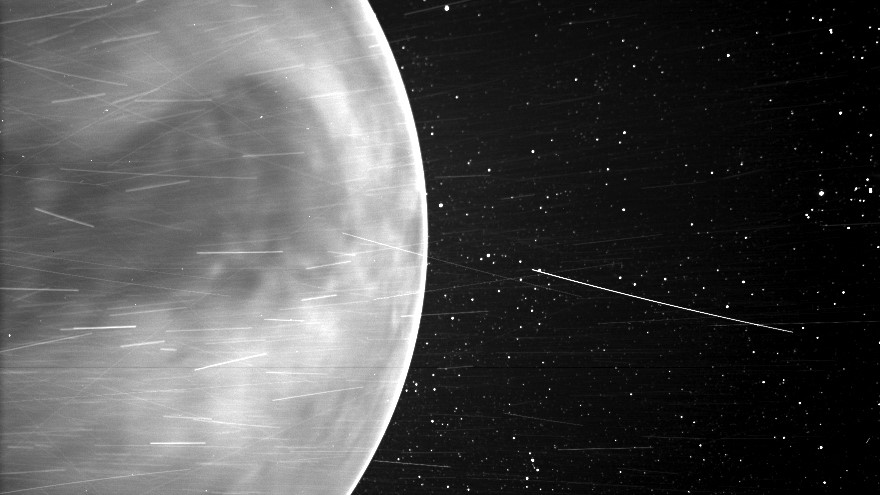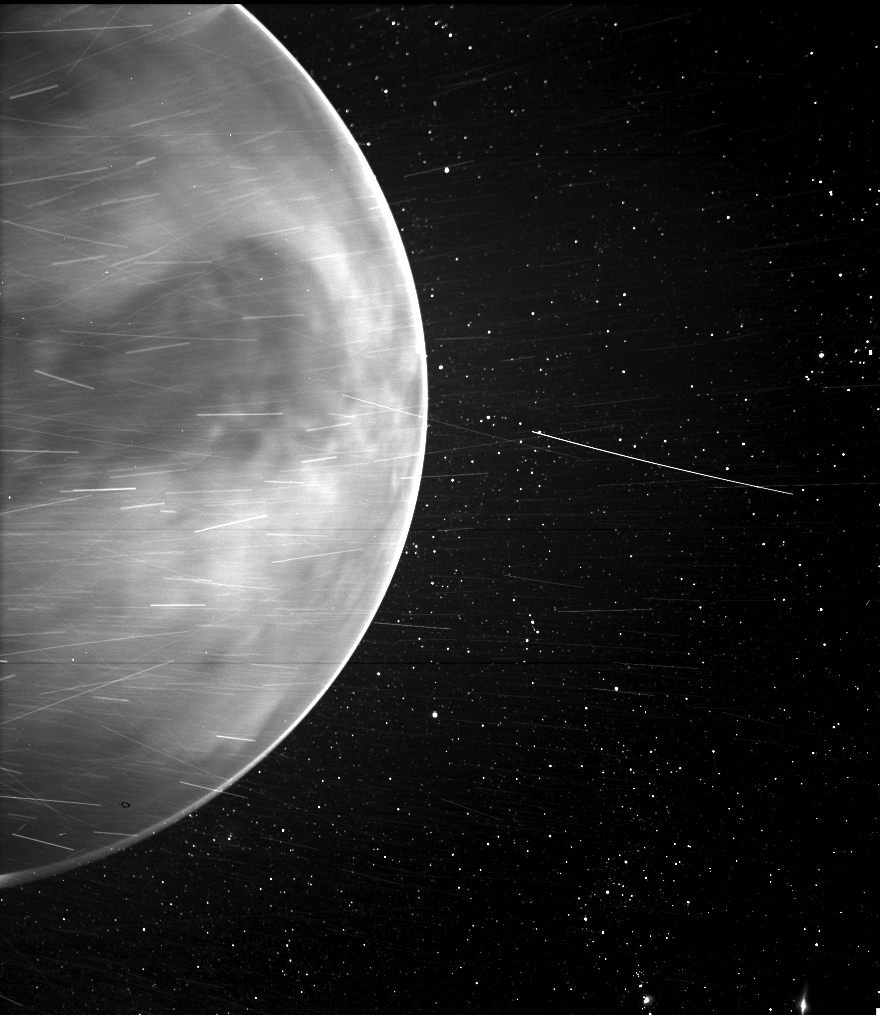NASA's Parker Solar Probe captures stunning Venus photo during close flyby

NASA's Parker Solar Probe nailed its fourth swing past Venus on Feb. 20, and mission scientists celebrated by releasing a stunning image captured during a similar maneuver in July.
Parker Solar Probe launched in August 2018 with a daring mission: to fly closer to the sun than any previous spacecraft. But along the way, the probe needs to whiz past Venus a total of seven times, with each pass pulling the spacecraft closer to the sun. And while Parker Solar Probe is tailored to studying the sun, if a spacecraft has to loop past our "evil twin" planet anyway, might as well turn the instruments on, the team figured.
On July 11, 2020, the spacecraft was conducting its third Venus flyby, zooming 7,693 miles (12,380 kilometers) away from the planet, according to a NASA statement. During the maneuver, the team switched on the spacecraft's Wide-field Imager for Parker Solar Probe (WISPR) instrument to take a peek at Venus — with stunning results.
Related: A string of planets sparkle in photos from 3 different sun probes

WISPR is designed to capture distant, visible-light images of phenomena surrounding the sun, like the solar wind that constantly shoots charged particles out from the sun across the solar system or the coronal mass ejections that vomit blobs of matter into space, according to NASA.
So this isn't your typical planetary glamor shot: there is no color, no intricate clouds, no cosmic crispness.
But it's a fascinating view of Earth's neighbor, and one that scientists are still parsing, according to the NASA release. The bright rim around Venus' edge may be light from individual oxygen atoms in the planet's upper atmosphere pairing up, creating what's known as nightglow since it occurs on the shadowed side of the planet.
Get the Space.com Newsletter
Breaking space news, the latest updates on rocket launches, skywatching events and more!
The streaks that can be seen crossing the image also offer a puzzle. Some may be the traces of cosmic rays while some may be dust reflecting sunlight into the camera and some may be tiny particles from the spacecraft itself, flung off by impacting dust.
But the real highlight is Venus itself, which looks nothing like what scientists expected to see with WISPR. "WISPR is tailored and tested for visible light observations," Angelos Vourlidas, the WISPR project scientist from the Johns Hopkins Applied Physics Laboratory (APL) in Maryland said in the statement. "We expected to see clouds, but the camera peered right through to the surface."
Specifically, the instrument captured differences in surface temperature on Venus. The dark blob in the center of the image of the planet is a massive highland region that scientists call Aphrodite Terra. Here, scientists know that the rock is cooler, by about 85 degrees Fahrenheit (30 degrees Celsius) compared to nearby regions, according to NASA.
WISPR seeing this temperature difference could mean that something strange is happening in Venus' thick atmosphere that's allowing the instrument to see through the clouds. Or, it could mean that WISPR can actually pick up some near-infrared light it wasn't technically designed to see, which could create new opportunities for observing the spacecraft's primary target, the sun. "Either way," Vourlidas said, "some exciting science opportunities await us."
To determine which scenario is at play, WISPR took similar photographs during Parker Solar Probe's fourth Venus flyby, which took place on Feb. 20. At the time of closest approach, at 3:05 p.m. EST (2005 GMT), the spacecraft came within 1,500 miles (2,400 km) of the Venusian surface, according to a NASA statement.
However, those images won't make it to Earth until late April. The spacecraft's next milestone will be a close approach to the sun on April 29; its next Venus flyby is scheduled for Oct. 16.
Email Meghan Bartels at mbartels@space.com or follow her on Twitter @meghanbartels. Follow us on Twitter @Spacedotcom and on Facebook.
Join our Space Forums to keep talking space on the latest missions, night sky and more! And if you have a news tip, correction or comment, let us know at: community@space.com.

Meghan is a senior writer at Space.com and has more than five years' experience as a science journalist based in New York City. She joined Space.com in July 2018, with previous writing published in outlets including Newsweek and Audubon. Meghan earned an MA in science journalism from New York University and a BA in classics from Georgetown University, and in her free time she enjoys reading and visiting museums. Follow her on Twitter at @meghanbartels.









